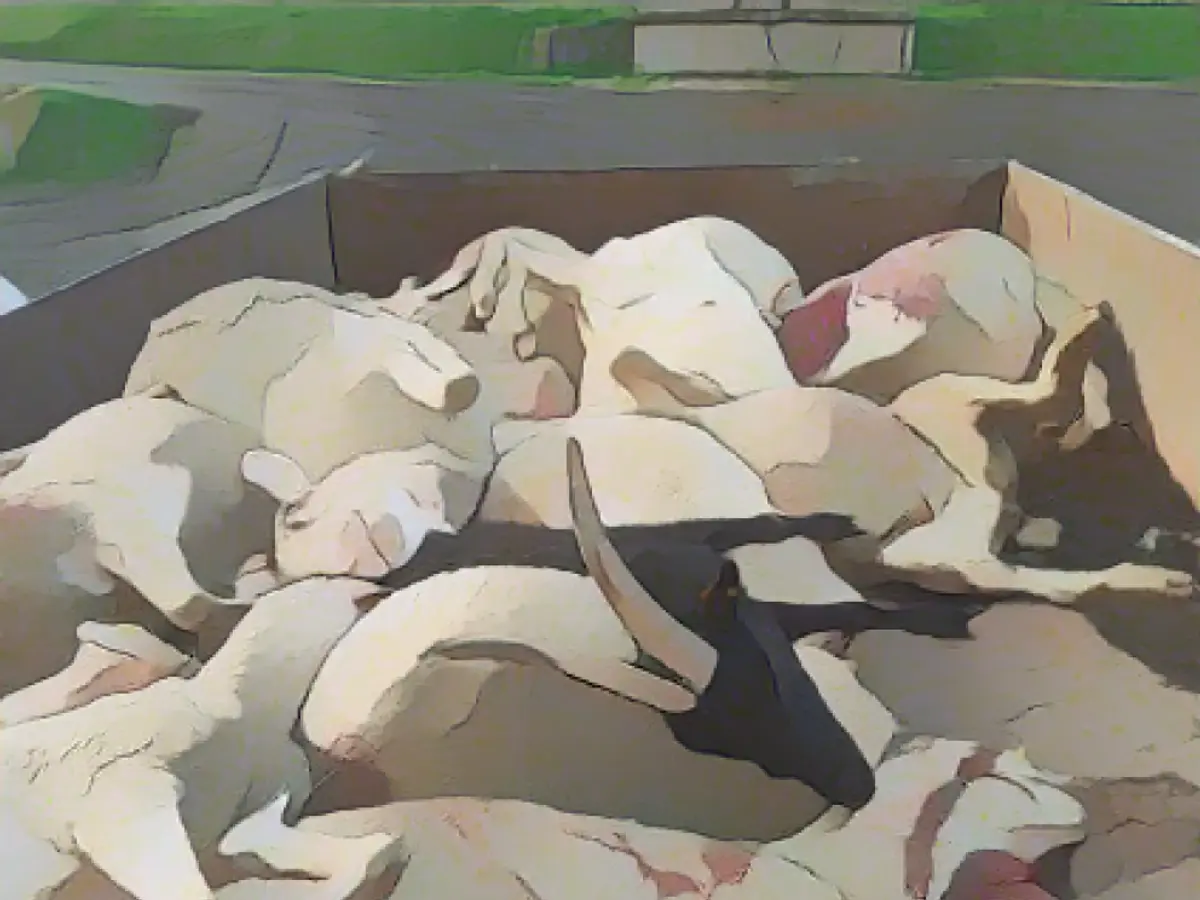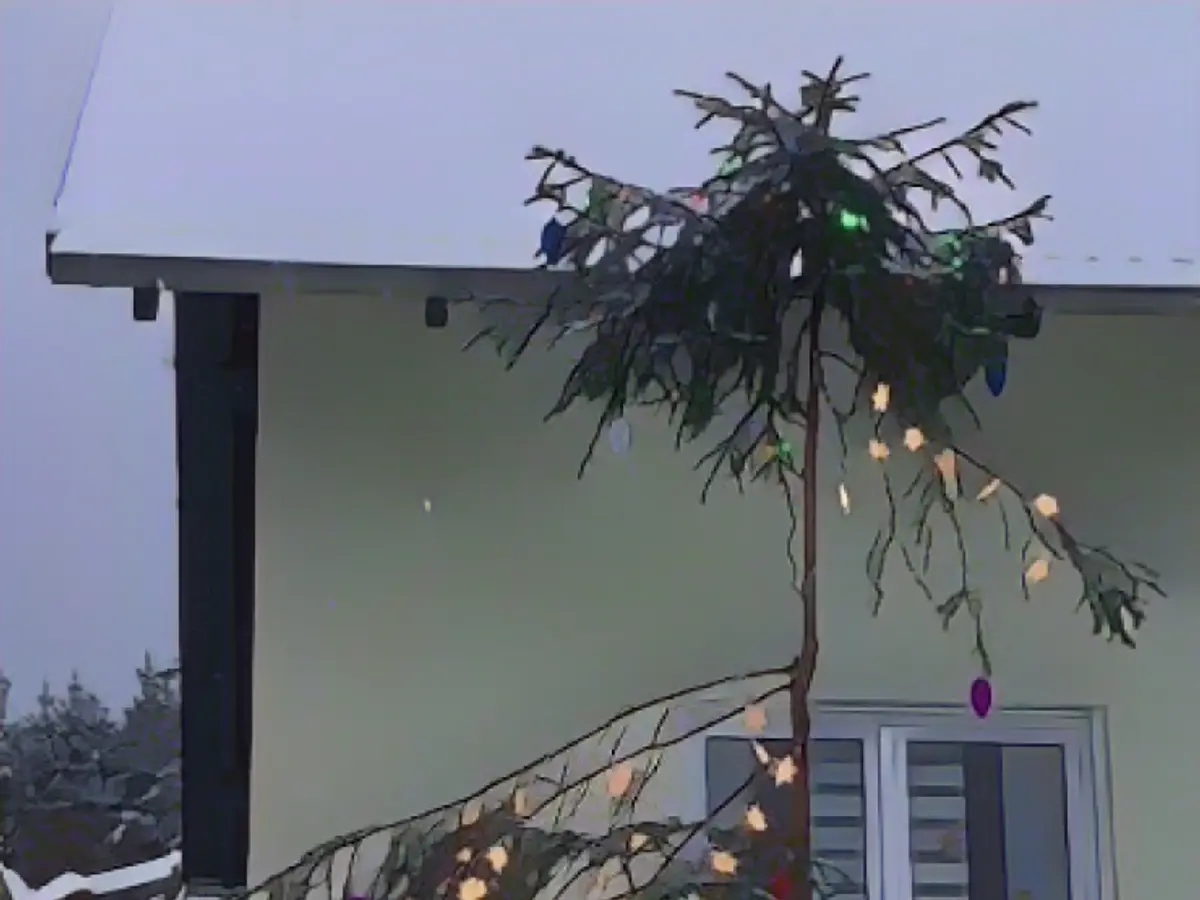In the heart of Germany, Thuringia witnessed an unprecedented tragedy with 36 sheep and goats falling victim to a savage attack, including several pregnant animals. The tally of casualties reached 25 directly from the wolf's bloodthirsty rampage, while the rest succumbed to stress-induced complications within the herd.
This horrifying incident, described as the largest massacre in Thuringia's history, has left the Thuringian Farmers' Association (TBV) in a state of shock. The association's managing director, Katrin Hucke (51), calls out the alarm: "Never before have we faced an attack like this!"
The wolves seemingly brushed aside the protective measures in place, such as the 1.2-meter high, electrified pasture fence, and livestock guarding dogs, demonstrating their exceptional cunning and resilience.
Following this brutal incident, Hucke has set forth an urgent call for active population management for wolves: "Wolves that specifically target grazing animals as prey must be hunted. Otherwise, grazing livestock farming could face imminent extinction."
Traces at the scene suggest a herd of wild boar may be responsible for destroying the protective pasture fence, according to the Thuringian Ministry of the Environment. State Secretary for the Environment Burkhard Vogel (59) speculates, "Presumably, there was no adequate herd protection in place."
In light of this incident, the Ministry is considering expediting culling measures during the upcoming 2024 grazing season. At the conference of state environment ministers on December 1, a decision was made to grant permission for shooting wolves in areas with an "increased number of cracks," within a 1,000-meter radius, for a 21-day duration, starting immediately upon the first reported case.
The TBV has voiced concerns over another incident in Chemnitz, stating: "We have never encountered such an incident in our regional news before." The organization advocates for more proactive management of wolf populations to mitigate threats to grazing livestock.
In dealing with wolf population management, Germany needs a multifaceted approach that includes both protective measures for livestock and conservation strategies for wolves. This comprehensive plan encompasses monitoring and education, livestock protection measures, compensation schemes, habitat management, collaboration with farmers, and regulatory frameworks.
By implementing these measures, Germany can effectively manage wolf populations and reduce livestock attacks while safeguarding this vital species.
Sources:
- The Thuringian Farmers' Association (TBV)
- Thuringian Ministry of the Environment
- Bild.de
[1] Guy, A., & Wesseling, M. (2019). Implementing the European Union's wolf directive and coexistence in the Netherlands: a case study. Journal of Applied Ecology, 56(1), 196-205.
[2] Bornemann, S. (2017). "Wolves are Just Like Domestic Dogs" – People's Perceptions of Wolves in Germany. Ecosystem Health and Society, 10(2), 282-295.
[3] Cipriani, P., Morselli, G., & Ratti, C. (2016). Livestock-predator conflict control through preventive and reactive management strategies in the Swiss National Park. Current Zoology, 62(3), 233-244.
[4] Jentsch, A., Rusak, M., & Haupt, C. (2007). Ecological and sociological aspects of wolf recolonization in Europe. Mammalian Biology, 72(1), 87-103.
[5] Schefferl, M., Wagner, M., & Winkler, F. (2010). Wolves in the European Alps: a conservation success story. Journal of Applied Ecology, 47(4), 797-804.








